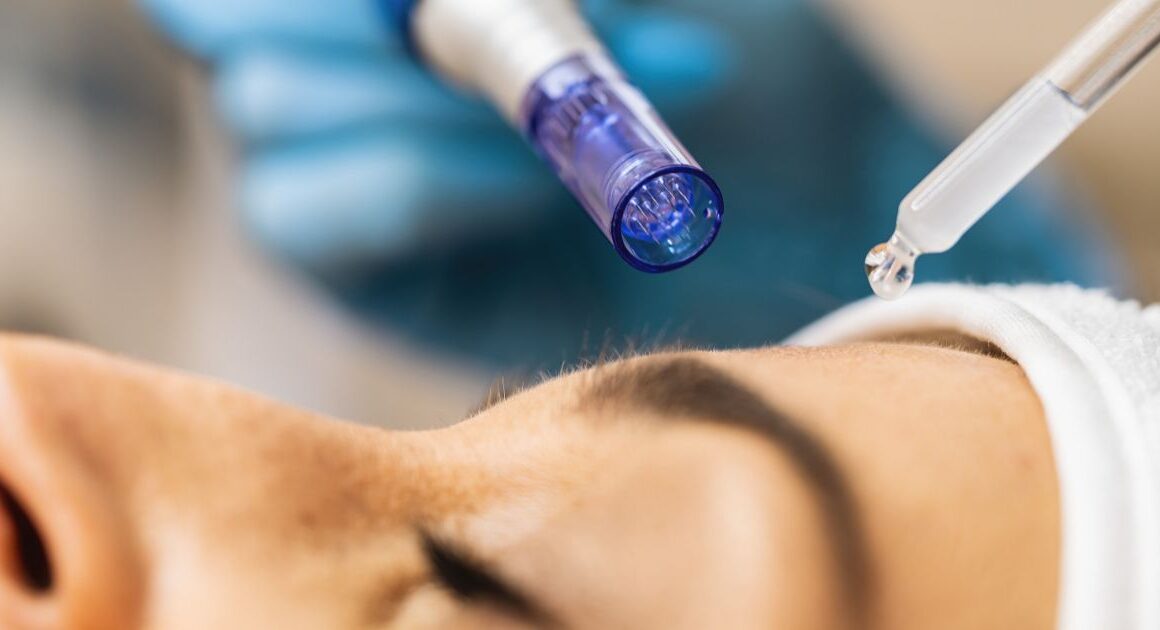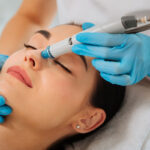Microneedling: Unlocking the Secrets to Radiant Skin
Microneedling, a minimally invasive cosmetic procedure, has gained popularity for its ability to rejuvenate the skin and address various dermatological concerns. In this informative guide, we will delve into the world of microneedling, exploring its benefits, procedure, aftercare, and potential risks. Whether you’re seeking to reduce acne scars, minimize wrinkles, or enhance your skin’s overall appearance, read on to discover the wonders of microneedling.
Understanding Microneedling
Microneedling, also known as collagen induction therapy, involves using a device with tiny needles to create controlled micro-injuries in the skin. These micro-injuries stimulate the body’s natural healing response, triggering collagen and elastin production, leading to improved skin texture, firmness, and overall rejuvenation.
The Benefits of Microneedling
Microneedling offers a multitude of benefits for the skin. It can reduce the appearance of acne scars, fine lines, and wrinkles, improve skin tone and texture, minimize enlarged pores, and fade hyperpigmentation. Additionally, it can enhance the absorption and efficacy of skincare products, resulting in a more radiant and youthful complexion.
The Microneedling Procedure
During a microneedling session, a trained aesthetician or dermatologist will cleanse the skin and apply a numbing cream to ensure comfort. The microneedling device is then gently rolled or stamped across the treatment area, creating controlled micro-injuries. The procedure usually takes about 30-60 minutes, depending on the size of the treated area.
Post-Treatment Care
After microneedling, it’s essential to follow proper post-treatment care to optimize results and minimize potential side effects. This includes avoiding direct sunlight, wearing sunscreen, and using gentle, hydrating skincare products. It is normal to experience temporary redness, mild swelling, and sensitivity following the procedure, which typically subsides within a few days.
Microneedling at Home vs. Professional Treatments
While there are at-home microneedling devices available, professional treatments offer several advantages. Medical professionals have the expertise to customize the treatment to your specific needs, use sterile and high-quality equipment, and ensure proper safety protocols. Professional treatments also tend to deliver more significant and long-lasting results.
Is Microneedling Painful?
Most individuals find microneedling to be relatively tolerable. Before the procedure, a numbing cream is applied to minimize discomfort. The sensation during the treatment is often described as a mild prickling or vibrating sensation. Any post-treatment discomfort is typically mild and subsides quickly.
Potential Risks and Considerations
While microneedling is generally safe, there are some potential risks to be aware of. These include infection, skin irritation, and rare cases of hyperpigmentation or scarring. To minimize these risks, it is crucial to have the procedure performed by a trained and reputable professional in a sterile environment.
Who is a Good Candidate for Microneedling?
Microneedling is suitable for a wide range of skin types and concerns. Individuals with acne scars, fine lines, wrinkles, uneven skin tone, and texture irregularities can benefit from this treatment. However, those with active skin infections, open wounds, or certain medical conditions may not be suitable candidates. A consultation with a qualified professional is crucial to determine candidacy.
The Rejuvenating Power of Microneedling
Microneedling has gained recognition for its ability to rejuvenate the skin. By stimulating collagen and elastin production, it helps improve skin elasticity, firmness, and overall texture. Additionally, it can minimize the appearance of stretch marks and promote hair growth in certain cases. The results of microneedling are gradual and cumulative, with optimal outcomes typically seen after a series of treatments.
Combining Microneedling with Other Treatments
Microneedling can be effectively combined with other treatments to enhance results. Popular combinations include incorporating serums or growth factors during the procedure to enhance skin nourishment. It can also be combined with platelet-rich plasma (PRP) therapy, which utilizes the patient’s own blood to stimulate additional collagen production.
Conclusion
Microneedling has emerged as a powerful cosmetic procedure for achieving youthful, radiant skin. By understanding the benefits, procedure, aftercare, and potential risks associated with microneedling, you can make informed decisions about incorporating it into your skincare routine. Remember, consulting with a qualified professional is essential to determine if microneedling is suitable for your unique skin concerns. Unlock the secrets to radiant skin with the transformative power of microneedling.













